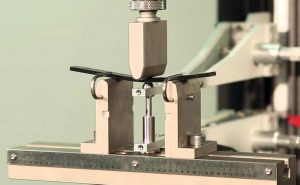High strength materials, like metals and concrete, are typically heavy. Increasingly we need lighter weight materials to replace these for construction of buildings and vehicles, that require less fuel to process and move them around, but which also offer the same or better levels of protection and strength. Composite materials are one approach to achieving lower weight and higher strength combination. A composite material is one that is ‘composed’ of two or more separate components. By carefully combining two or more materials that have different desirable characteristics, such as lightness, and strength, it can be possible to create a new ‘composite material’ that combines these separate properties.
In this investigation, a common form of composite material is illustrated by wrapping a non-stretch tape around a polystyrene block and testing changes to its rigidity and strength. The strength of the tape under tension combines with the light weight of the polystyrene which acts as a ‘filler’ to shape the tape. This investigation parallels Matt’s testing of carbon fibre sheets using formal testing apparatus.

Matt’s apparatus for testing carbon fibre rigidity and strength
The following documents comprise the notes and instructions for this activity. The Teachers Notes provide background information and along with the Technical Notes will enable teachers to use the activity. The Student Notes (word docs provided so that you can adapt the activity to suit your needs) are provided as worksheets and sample answers are also included.
Composite Materials Teacher Notes
Composite Materials Technical Notes
Composite Materials Student Worksheet (pdf)
Composite Materials Student Worksheet (Word)
Composite Materials Sample Answers
